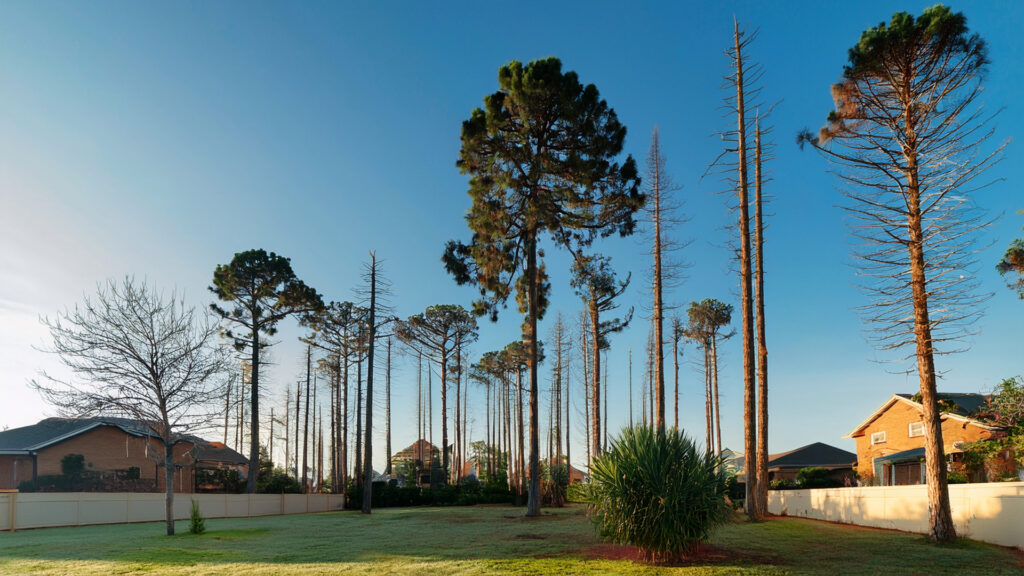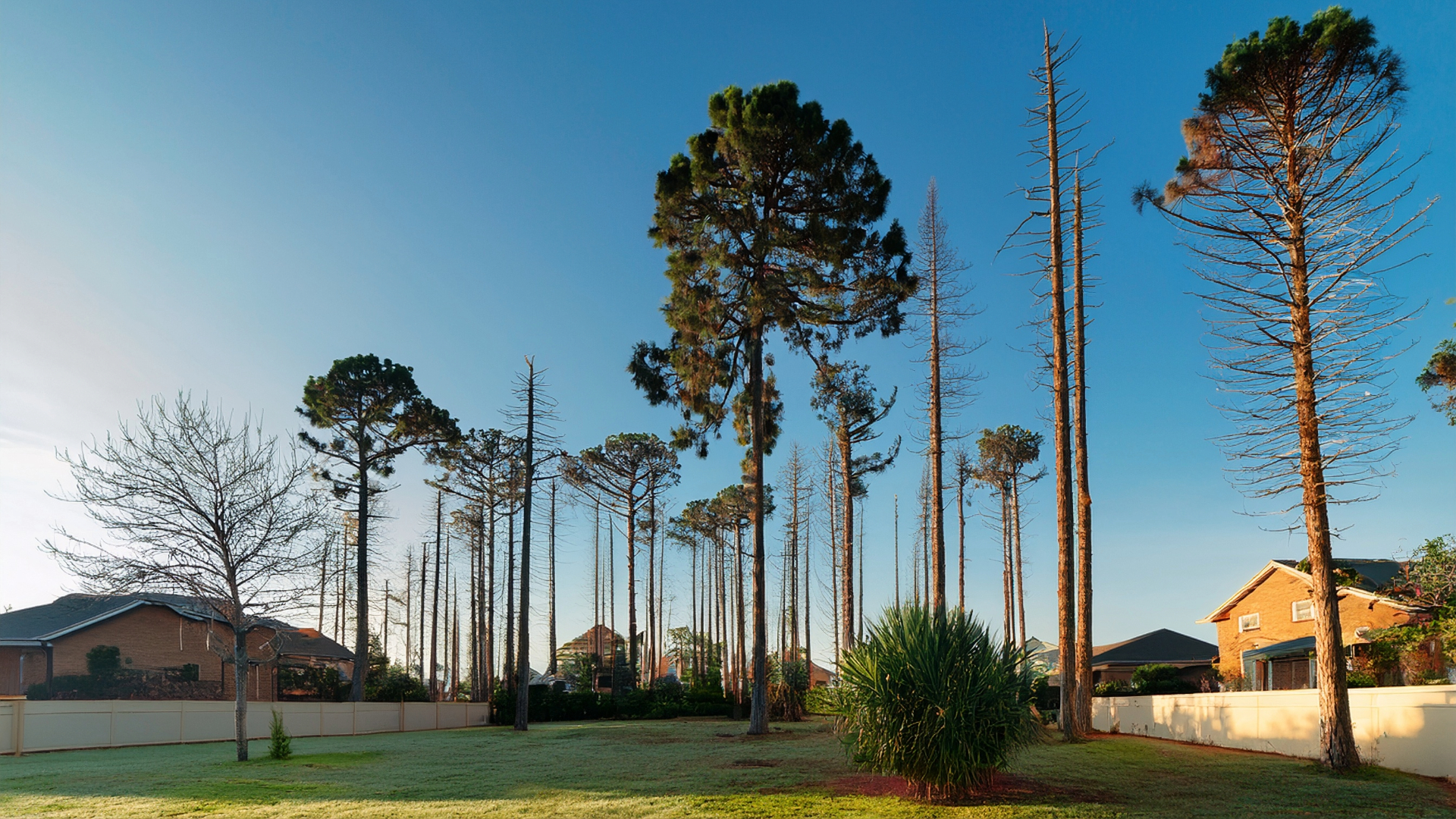
Spring is almost here and many of us have at least one or more dead pine trees in our yards. Outbreaks of the Southern Pine Beetle (SPB) in Georgia in the past two years have been responsible for killing off large areas of pine trees. Pine trees are majestic, but like all living things, they have a lifespan. When a pine tree dies, it’s important to address it promptly. Here’s a detailed guide to help you decide when to chop down dead pine trees, ensuring safety and environmental care.
1. Signs Your Pine Tree Is Dead
Before you take action, confirm the tree is truly dead. Look for:
- Brittle Branches: Healthy pine trees have pliable branches. If they snap easily, it could be dead.
- Needle Loss: A dead pine tree often has brown or missing needles.
- Peeling Bark: Bark that falls off in large chunks may signal death.
- Fungal Growth: Mushrooms or other fungi on the trunk might indicate decay.
2. Safety First: Timing Matters
Dead pine trees can become hazardous quickly. Here’s when to act:
- Proximity to Structures: If the tree is near your home, power lines, or other buildings, remove it as soon as possible to prevent damage.
- Storm Season: Dead trees are more likely to fall during storms. Removing them before high winds or severe weather is critical.
- Insect Infestations: Dead pine trees attract pests like beetles, which can spread to healthy trees. Remove infested trees promptly.
3. Seasonal Considerations
- Winter: Frozen ground can make the removal process safer and prevent damage to surrounding landscaping.
- Spring and Summer: Removing trees in these seasons can prevent pest infestations from spreading.
- Fall: Ideal for inspection and preparation before winter storms.
4. Professional vs. DIY Removal
- Hire Professionals: If the tree is large, near structures, or poses risks, always consult a licensed arborist or tree removal service.
- DIY Caution: If you have the proper equipment and experience, small trees can be removed safely. Always wear protective gear and follow safety guidelines.
Dead pine trees aren’t just eyesores—they’re potential safety risks. Acting promptly can save you money, prevent accidents, and preserve the beauty of your property. Whether you choose professional services or a DIY approach, the key is informed and timely action.
The ACC Guidelines state that the “removal of any living tree must be approved by the ACC. Dead trees may be removed without ACC notification and/or approval.“
Learn more about the Southern Pine Beetle (SPB) from the US Department of Agriculture by clicking here.
If you need to submit an ARI, be sure to fill one out about 15 days prior to your project. Enjoy the warmer weather! Take care!

